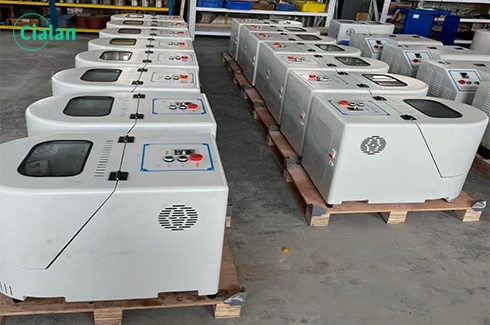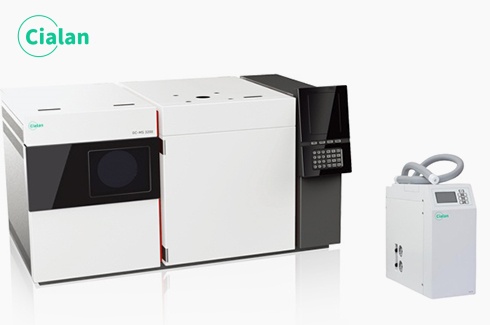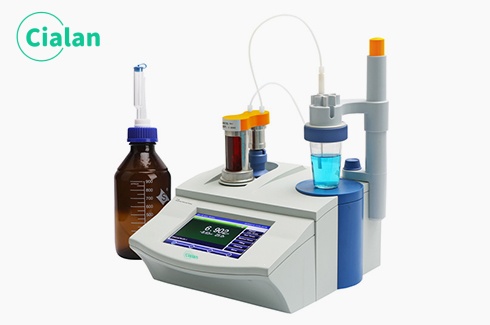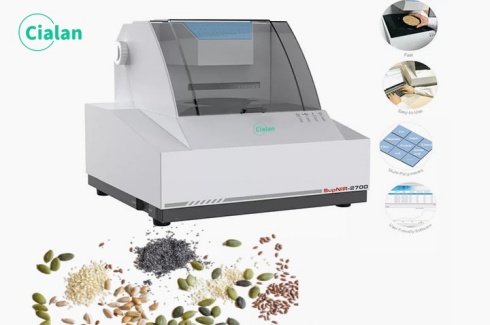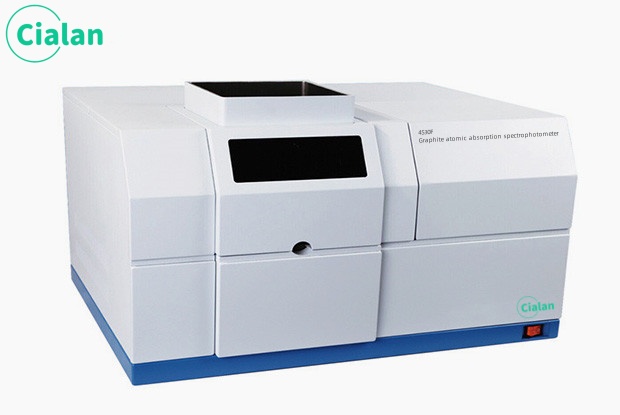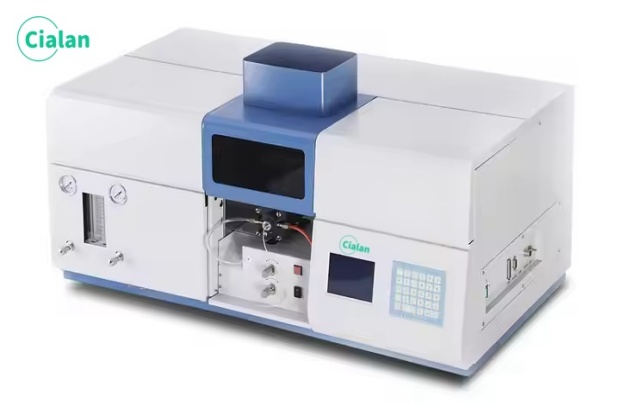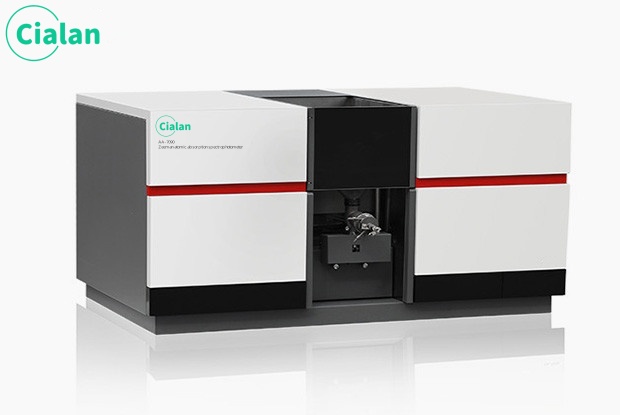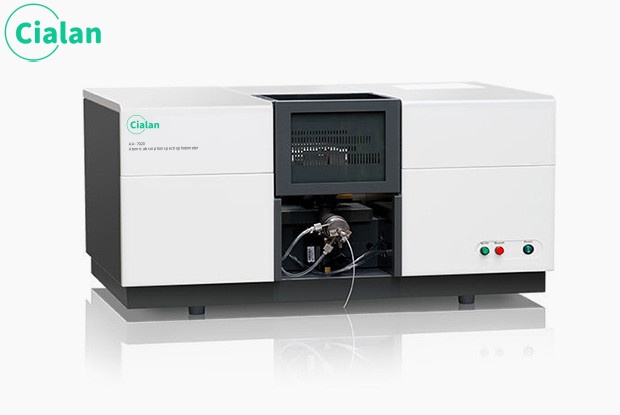Conductivity Meter FAQ Guide: Essential Insights For Water Quality Researchers
The FAQ Guide for water conductivity meter assists water quality researchers in making informed decisions that impact measurement precision. It highlights the performance of conductivity testers due to their ATC function, widely measuring range, date saving.The guide covers different types of EC meter, including benchtop conductivity meter, portable conductivity meter, in line conductivity meter. Calibration standards and maintenance recommendations are provided to ensure reliability. Additionally, it discusses the relationship among EC, TDS and pH. The guide aims to save time and resources while choosing right instrument.
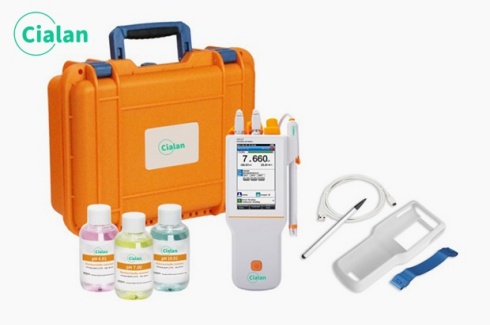
What Is Conductivity Meter?
A conductivity meter is an instrument used to measure the ability of a solution to conduct electricity, which reflects the concentration of ions in solution and their mobility.
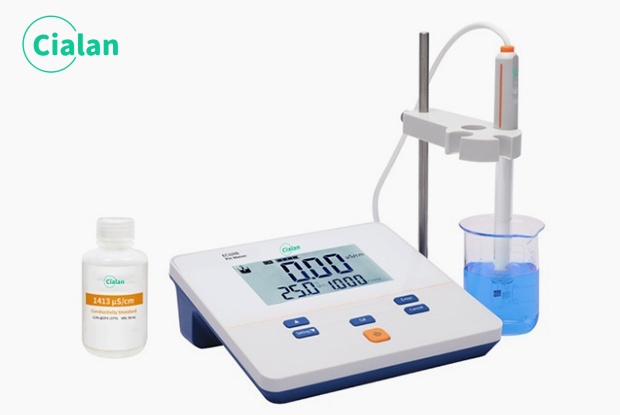
What Is A Conductivity Meter Used For?
Conductivity Meter Purpose.
EC conductivity meter is used to quickly assess the ionic concentration and purity of a solution by measuring the ability of a solution or liquid to conduct electricity.
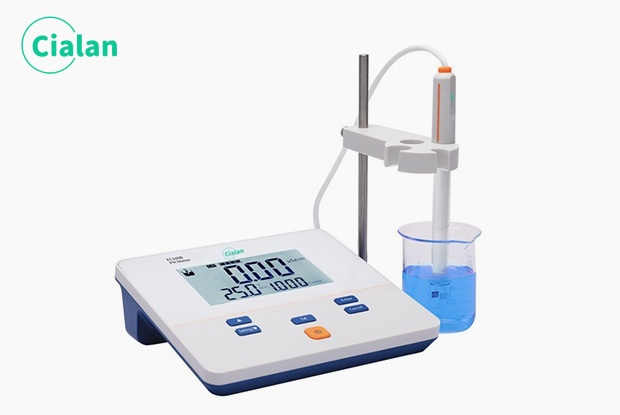
What Is The Unit Of Conductivity?
Conductivity is the reciprocal of resistivity and is standardized in Siemens per meter (S/m), often expressed as μS/cm or mS/cm.
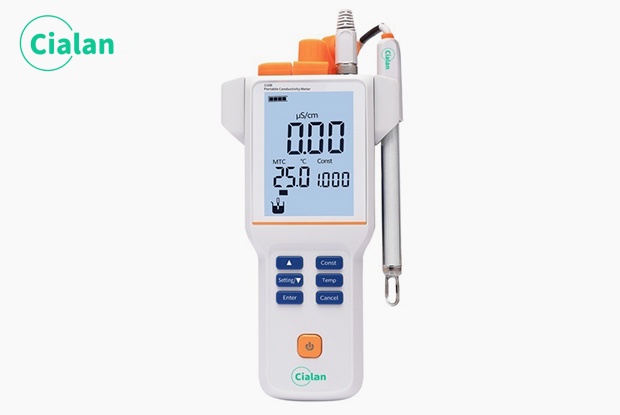
What Is The Basic Principle Of Conductivity Meter?
The conductivity of a solution is calculated by applying an alternating current through an electrode in the solution, and the resulting current is closely related to the concentration of ions in the solution.
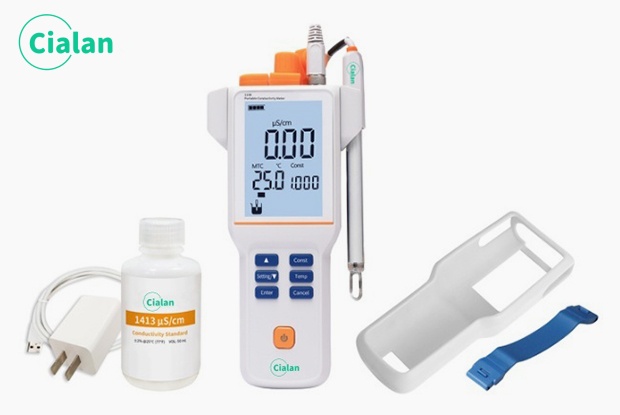
How Conductivity Meter Works?
The electrical conductivity meter generates an alternating current through an electrode that measures the resistance of a solution and converts it to a value of conductivity, which is the reciprocal of resistance a nd is usually expressed in µS/cm. Combined with temperature compensation and calibration of the electrode constants, the conductivity of a solution is analyzed.
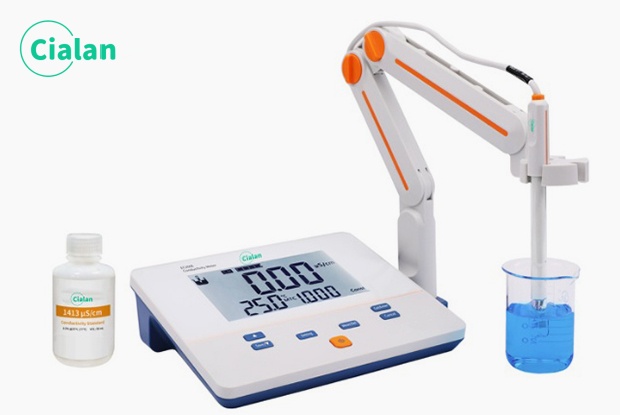
What Is The Components Of Conductivity Meter?
Conductivity meter parts
Electrodes: Generate an alternating current in the solution and measure conductivity.
Sensors: Includes probes and temperature sensors that measure temperature and automatically compensate for it.
Main unit: Calculates and displays the conductivity of the solution.
Power supply: Powered by power adapter or battery.
Standard solution: Used for periodic calibration of the instrument, e.g. KCL solution.
Other accessories such as electrode holders, rubber protective sleeves.
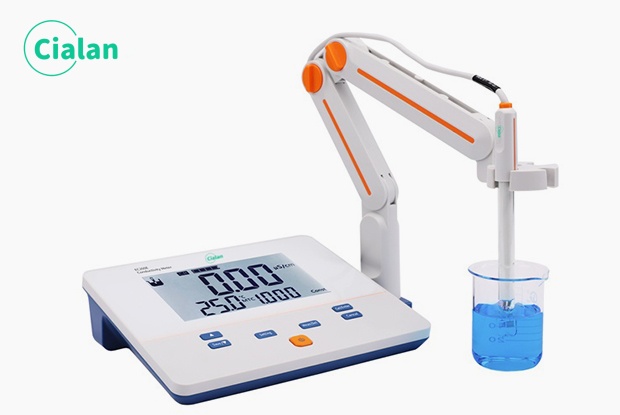
How To Calibrate Conductivity Meter?
The most common way to calibrate a conductivity analyzer is to place the sensor in a known conductivity standard solution such as KCI solution, adjust the instrument's readings to match the known value of the calibration solution and record the calibration data.
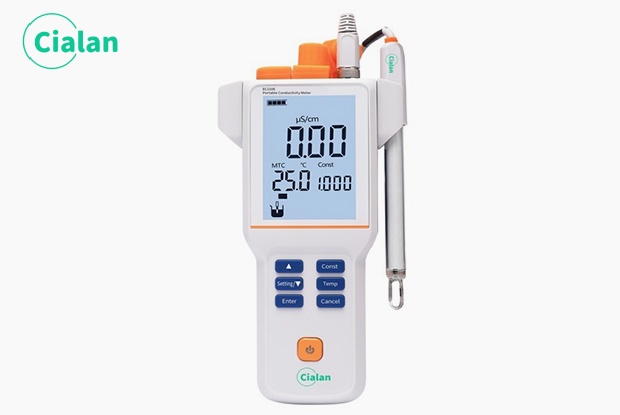
How Often Should You Calibrate a Conductivity Meter?
Per month or per week calibration is ok.
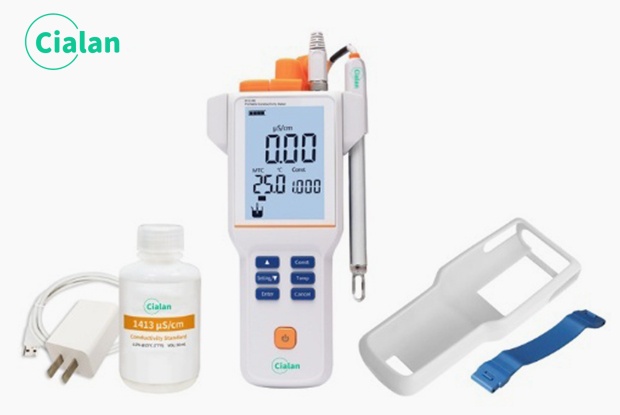
How To Read A Conductivity Meter?
After the measurement of the conductivity measurement device has stabilized, the instrument displays the conductivity value and the unit μS/cm or mS/cm.
It also displays the resistance, ATC, warm-up mode temperature value, calibration, solution name, operator, or other parameters such as TDS, salinity.
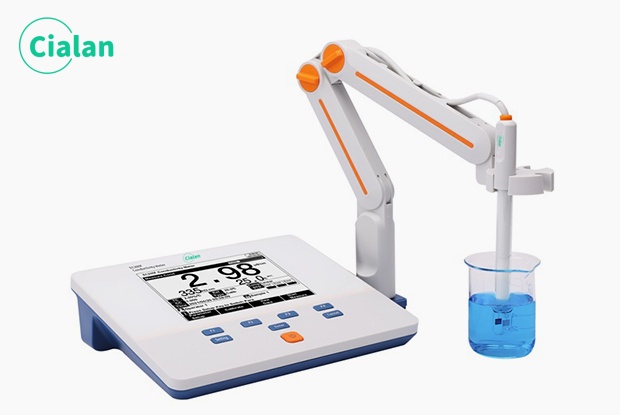
How To Use Conductivity Meter?
Instrument check: Make sure the conductivity measuring instrument is fully charged. Check that the electrodes are clean and intact.
Calibration: Use a standard calibration solution to ensure accurate readings.
Sample Preparation: Pour the solution to be measured into a clean beaker and allow to stand.
Measurement: Fully immerse the electrode in the solution, stir gently and start measurement, automatic warming, with readings stabilized, record the conductivity value.
Cleaning: Immediately after use, rinse the electrode with deionized water and pat dry, store it in a suitable solution.
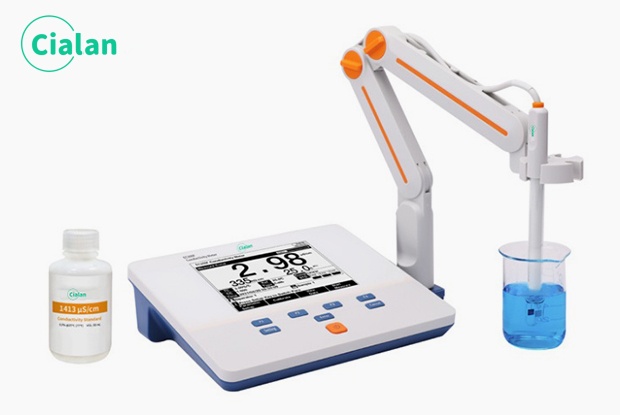
How To Do Maintenance Of Conductivity Meter?
Thoroughly rinse the electrode with deionized or distilled water after use, than dry the water with a soft cloth to avoid solution residue.
Ensure stable power supply from the battery and power adapter.
Keep the machine in a dry environment and check the interface and cables regularly.
Calibrate the machine regularly to ensure detection accuracy.
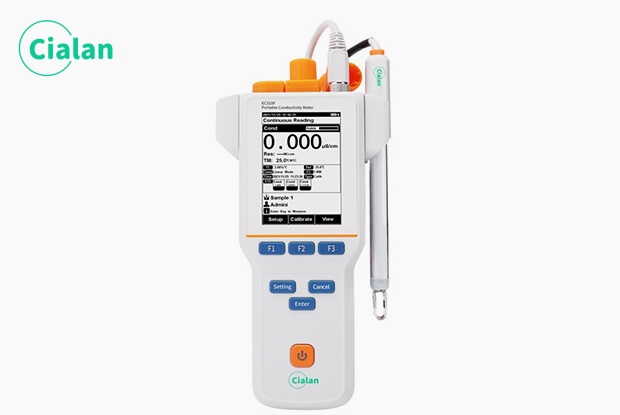
What Does A Conductivity Meter Measure?
Electrical conductivity meter for water measures the ability of a solution or liquid to conduct electricity.
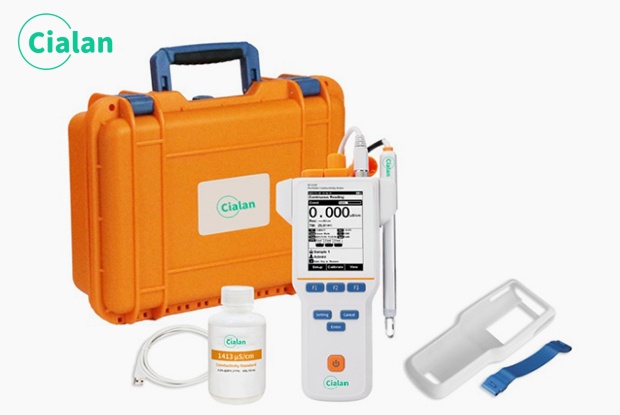
How To Clean Conductivity Meter Probe?
Routine Cleaning: Rinse the electrode with deionized or distilled water after each measurement. Shake the probe gently and use a dust-free filter paper or soft cloth to gently absorb the moisture on the surface of the probe, do not damage the electrode by direct wiping.
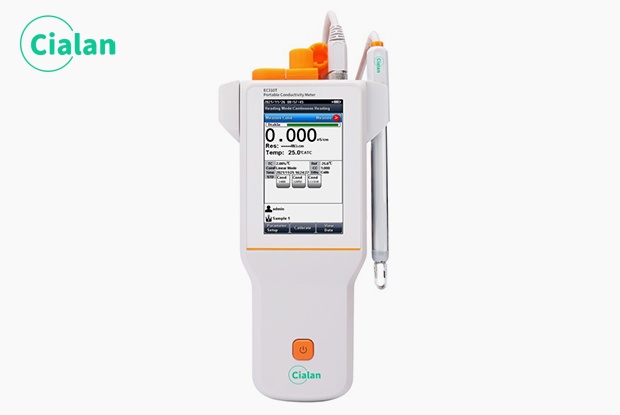
How To Measure TDS With Conductivity Meter?
Yes, TDS and EC are linearly related. The more ions dissolved in the solution, the stronger the conductivity. TDS can be estimated by measuring the conductivity value of water and multiplying it by the conversion factor.
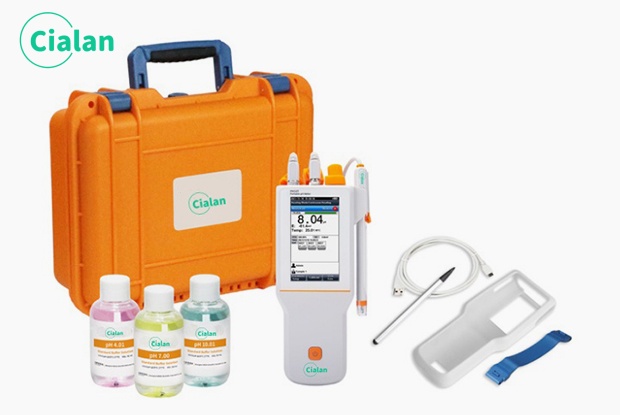
Can A Conductivity Meter Measure pH?
No, the conductivity meter for water cannot directly detect the pH value of the solution, because conductivity and pH are two completely different water quality parameters. The electric conductivity meter measures the conductivity of the solution, and the pH value of the solution must be measured with a special pH meter.
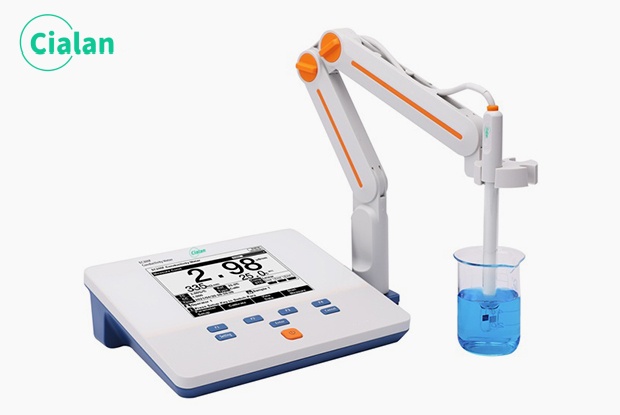
Can A pH Meter Be Used For Conductivity?
No, the ph meter cannot directly detect the conductivity value of the solution, because conductivity and pH are two completely different water quality parameters. The ph meter measures the ph value of the solution, and the conductivity value of the solution must be measured with a special conductivity meter instrumentation.
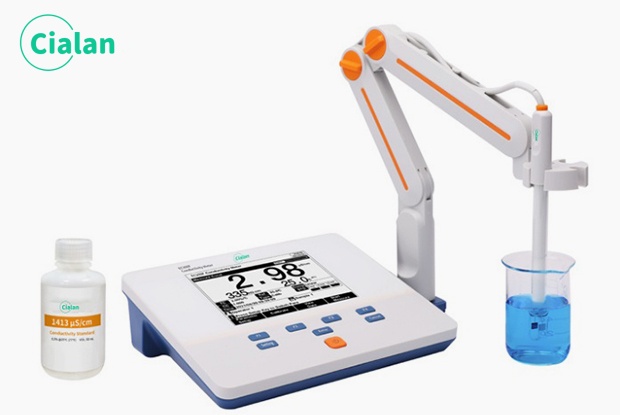
How To Fix Conductivity Meter?
If the electrode is damaged, you can replace the electrode with a new one by yourself.
If other parts are damaged, please provide the instrument model, fault location and error code, etc. directly contact the conductivity meter manufacturers you purchased for after-sale repair.
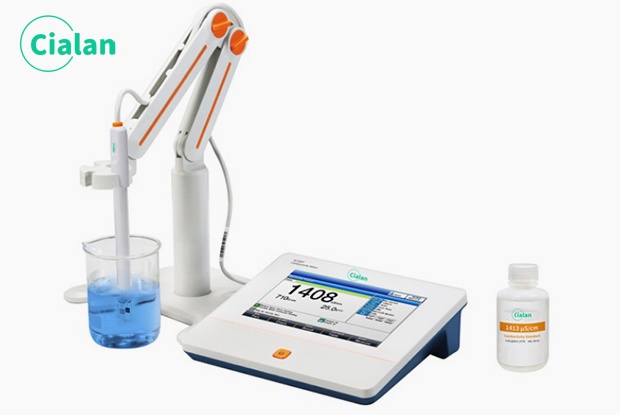
Application Of Conductivity Meter.
Water quality analysis: Can the water be drunk properly, or used for irrigation?
Wastewater treatment: Monitor whether sewage and industrial wastewater is being treated to standard.
Aquariums, swimming pools: Test the water for normal levels of salt and chloride ions.
Industrial water: E.g. high conductivity in boiler water signals a risk of scale.
Agricultural water: Whether the salt content of water used for irrigation is up to standard.
Hydroponics: Whether the quality of water used is normal.
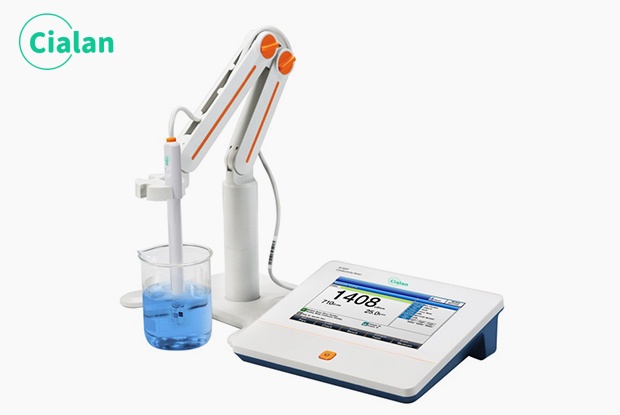
Conductivity Meter Range.
The best conductivity meter from Cialan supplier is available in conductivity ranges from 0.000 uS/cm to 3000 mS/cm and are available with linear, none, pure water ATC and MTC.
Cialan different models of EC meters for water have different measurement ranges, depending on the type of solution being tested.
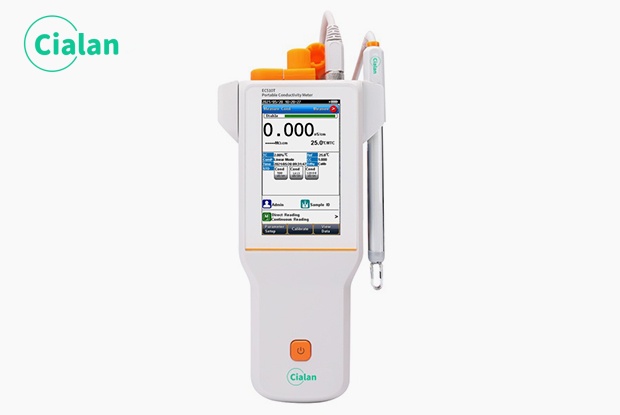
Conductivity Meter Vs pH Meter.
The pH meter uses a pH electrode to measure the concentration of H+ in the solution, which reacts to the acidity or alkalinity of the solution.
The EC meter water uses an EC electrode to measure the ability of the solution to conduct electricity, which reacts to the concentration of ions.
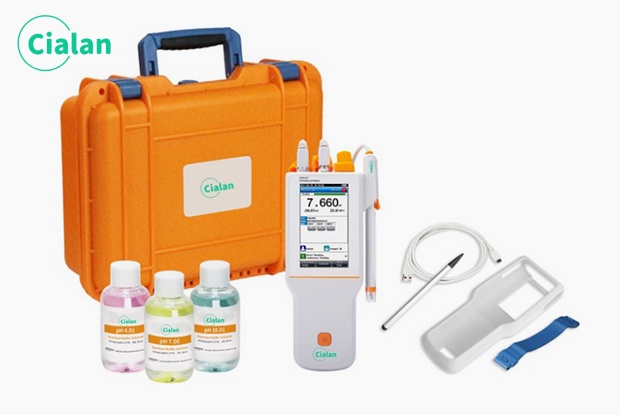
Types Of Conductivity Meter.
Handheld conductivity meter: Compact and lightweight, easy to carry, battery powered, automatic temperature compensation, suitable for outdoor or on-site rapid detection of the conductivity of the solution.
Benchtop conductivity meter: High precision, high accuracy, need to be connected to the power supply, suitable for laboratory or fixed place.
On-line conductivity meter: Installed in pipeline or reaction vessel, real-time continuous monitoring, support automation control.
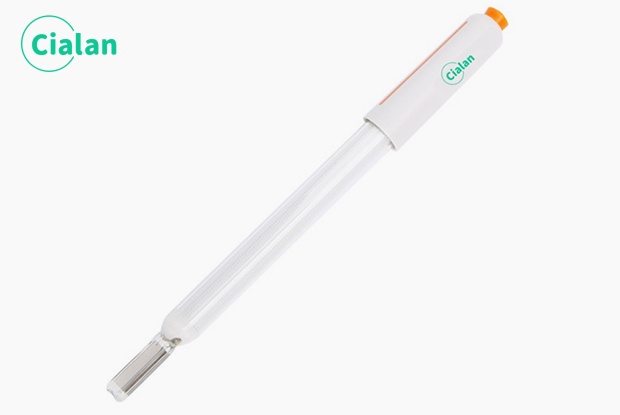
Advantages And Disadvantages Of Conductivity Meter.
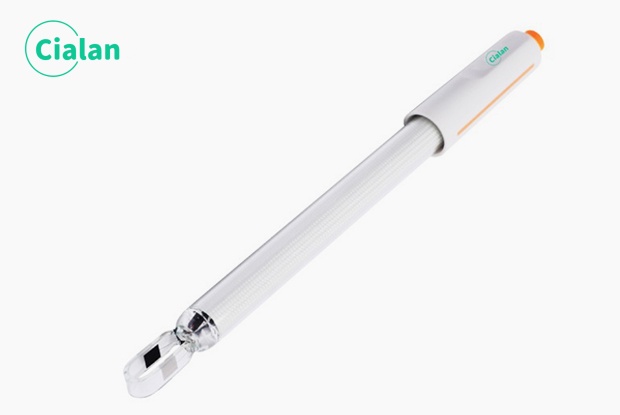
Conductivity Meter Calibration Standard Solution.
The calibration standard solution for digital conductivity meters is usually potassium chloride (KCl) solution because of its good linear relationship between conductivity and concentration and high stability.
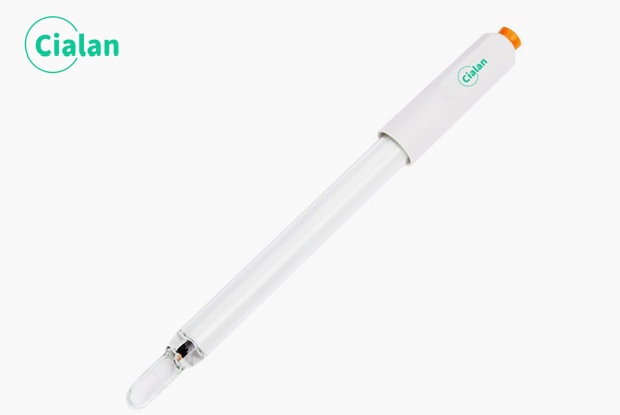
How Do You Measure Conductivity?
Conductivity is measured using a liquid conductivity meter and electrodes, which applies an alternating current to a solution and the resulting current to determine the solution's ability to conduct electricity.
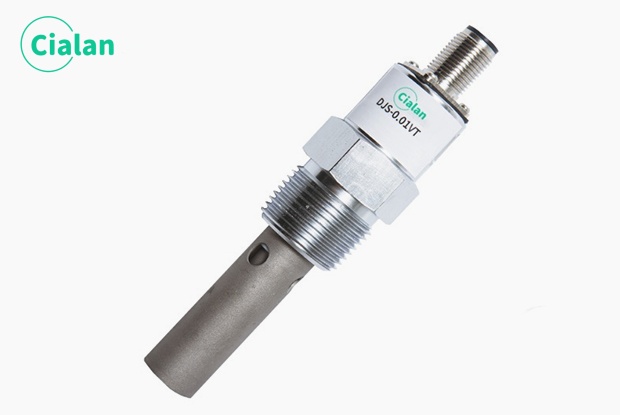
Is Water Conductive To Electricity?
Ultrapure water has extremely low conductivity and contains almost no impurities.
Tap water, mineral water, wastewater, etc. contain ionic compounds such as minerals and heavy metals, which enhance conductivity.
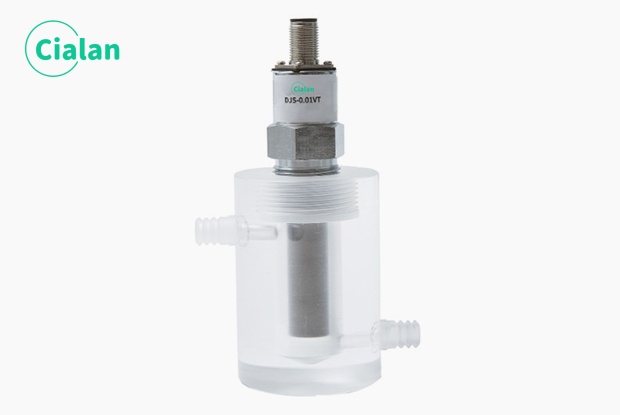
What Is The Conductivity Of Tap Water?
Tap water conductivity: About 50~800 μS/cm.
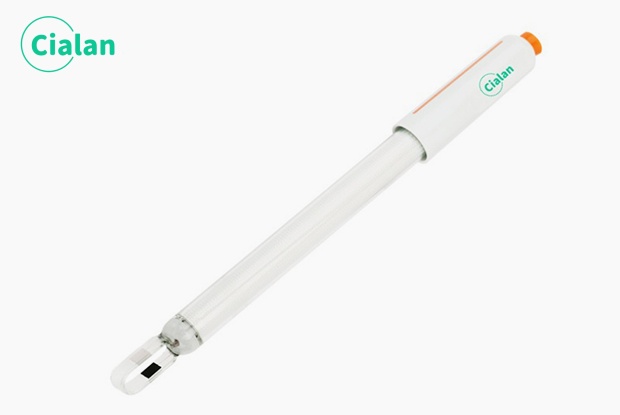
What Does EC Stand For?
EC is abbreviation of electrical conductivity. Reflects the conductivity of the solution.
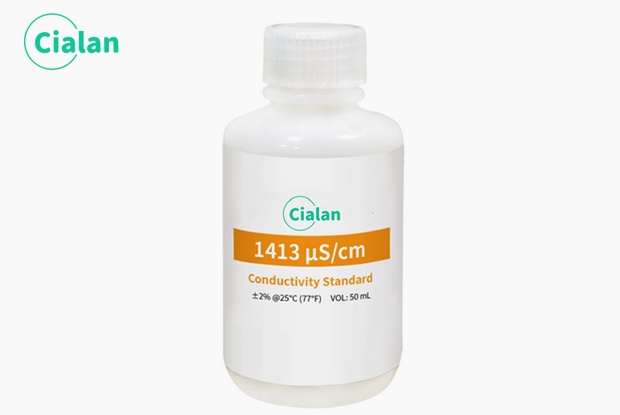
What Is The Difference Between EC And TDS Meter?
Lab conductivity meters and TDS meters are both used to assess water quality. EC measures the ability of a solution to conduct electricity, while TDS measures the total amount of dissolved solids in a solution. Both can be estimated using conversion factors.

Can You Convert EC To TDS?
TDS ≈ EC × Conversion Factor.
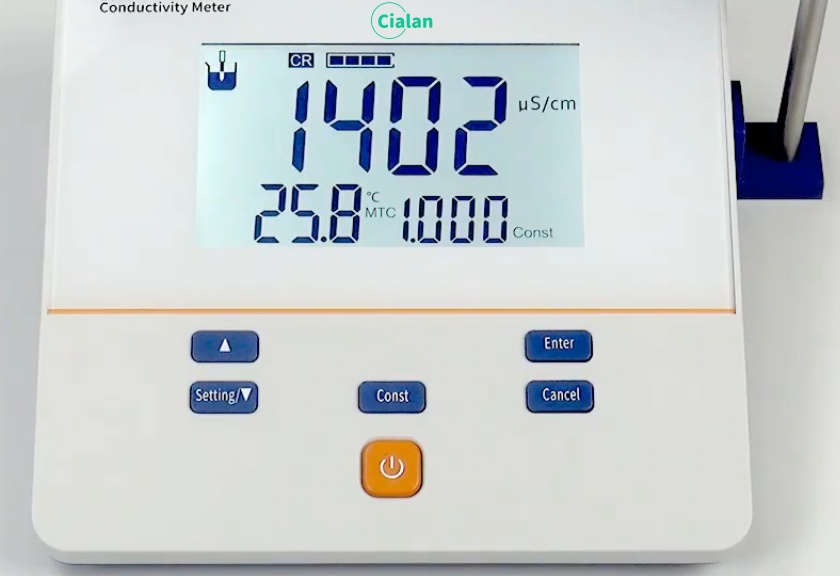
What Is The Normal EC Value Of Water?
Pure water:0.05~1 μS/cm
Drinking water:50~400 μS/cm
Distilled water:5~50 μS/cm
River water:100~1000 μS/cm
Sea water:50~55 mS/cm
Wastwater:1~100 mS/cm
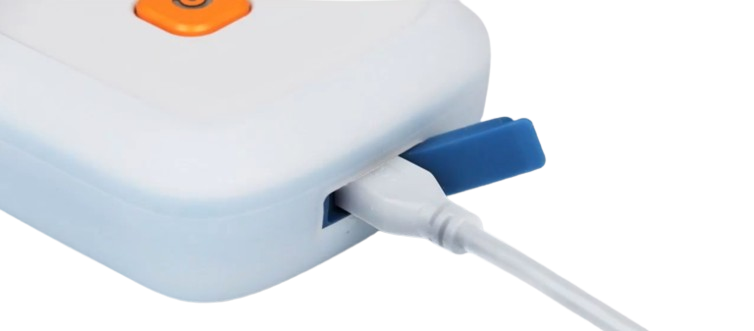
How Many PPM Is 1 EC?
Common conversion factors:
PPM = EC (mS/cm) × 500
PPM = EC (mS/cm) × 700
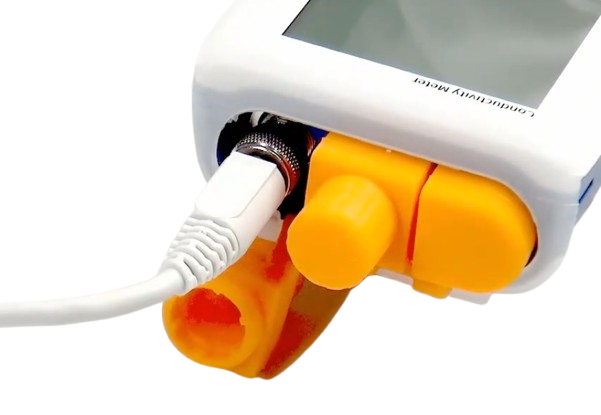
What Is The Relationship Between Conductivity And Water Quality?
Conductivity is an important indicator of water quality and can indirectly reflect the purity, degree of contamination and availability of water.
Pure water: Very low conductivity, almost no impurities.
Distilled water: Lower conductivity, less minerals, close to neutral.
Mineral water: Contains some minerals and has a moderate conductivity.
Drinking water: Conductivity should be less than 400 μS/cm and contain a moderate amount of minerals.
Hard water: Large amount of calcium and magnesium ions with high conductivity.
Boiler water: High conductivity leads to scaling.
Industrial wastewater, sewage: Polluted water contains heavy metals, nitrates or organic pollutants with high conductivity.
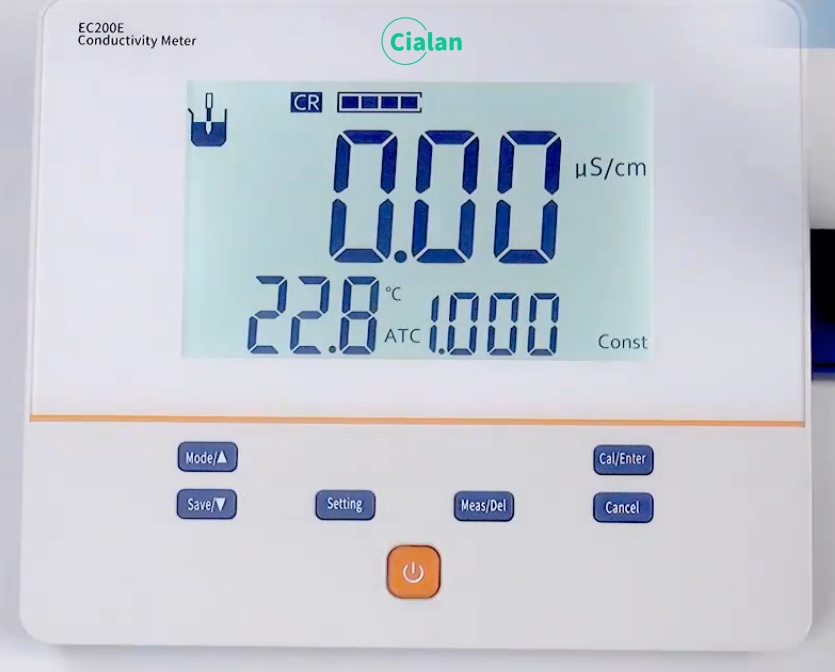
What Happens If EC Is Too High?
Aquariums: High salinity and heavy metals destroy fish cells and directly poison microorganisms and plankton.
Drinking water pollution: High conductivity leads to excessive nitrates, heavy metals and chlorides, which seriously affect human health.
Industry and agriculture: High conductivity leads to water scaling and metal corrosion, increasing maintenance costs. For agricultural irrigation Lotus, high conductivity leads to soil salinization, affecting crop yield.

What Causes High EC?
Ion Concentration: Conductivity is directly proportional to the concentration of ions in a solution; the higher the concentration, the greater the conductivity.
Ion species: different ions have different charges and migration rates, resulting in different conductivity.
Solution Temperature: Conductivity increases with temperature, and higher temperatures lead to faster ion migration.
pH: high pH leads to high conductivity.
TDS: The greater the TDS value in the solution, the higher the ion concentration and the greater the conductivity.

What Is The Relationship Between pH And EC?
Both pH and conductivity are related to ions, and a change in pH affects the degree of ionization of the water, which in turn affects the conductivity. a high pH value results in a high conductivity.

How To Buy A Conductivity Meter Tester From China?
Importing conductivity meter tester from China can be difficult for those who are new to international imports.
Purchasing from a reputable manufacturer and supplier eliminates hassle of logistics, as they handle the safe and reliable delivery of the product directly to your place.
When buying the conductivity test meter, it is important to keep the following points in mind:
1. Confirm that your selected supplier can securely export and deliver the machine, and ensure that your agreement includes all essential shipping information.
2. Choose the delivery way (by sea, air, or express) based on your preference.
3. Remember to factor in duty imports and taxes when calculating the total cost.

How Does a Manufacturer Deliver The Automated Conductivity Meter?
Safe shipping is so important as quality manufacturing.
A responsible manufacturer should deliver your conduct meter safely.
Most conductive meter manufacturers use export wooden case to pack the device.
You should read all the necessary instructions available on the sides of the boxes before boxing.

Is There Any Warranty On Conductivity Meter Unit?
For optimal performance, it is important to regularly maintain your electrical conductivity EC meter, so it can operate efficiently for an extended period. It is essential to be aware of the warranty coverage for your equipment, as it ensures that any manufacturing issues will be repaired at no additional cost by the supplier. Therefore, it is recommended to purchase a electro conductivity meter from a manufacturer that offers warranty services —Cialan.
Reputable amusement manufacturers typically provide a 1-year warranty. for example, offers complimentary repair and maintenance services during the first year.
Before purchasing a electrical conductance meter, it is advisable to review the warranty period and other associated terms and conditions.

What After-Sale Service Does A Electrical Conductivity Meter Units Provide?
The reliable china conductivity meter suppliers offers the following after-sale services:
1. Secure product delivery.
2. Thorough inspection prior to installation.
3. Complimentary online guidance for device installation and maintenance.
4. Free training for your users.
5. Regular assessments of your AAS equipment.

Can You Do Oem&Odm For High Range Conductivity Meter?
Yes, Cialan can do OEM#OEM for our users, just send us your requirements for electrical conductivity meter measures.

Where To Find EC Meter Unit Manufacturers?
Numerous online directories can connect you with atomic absorption machine manufacturers.
A simple search for "top-rated laboratory conductivity meter manufacturers" yields multiple options. However, it's essential to exercise caution when selecting a manufacturer from online search results. Before making a decision, conduct thorough research on the company's background and reputation. Look up reviews on “Google” and reputable review sites to gauge their credibility.
Additionally, It's also crucial to review their portfolio of request that potential manufacturers share examples of their previous work to ensure they meet your standards.

How To Choose A Right Electromagnetic Conductivity Meter For Water Quality Application?
Is the solution being measured ultrapure water, tap water or industrial wastewater?
Is the measurement location in a laboratory, in the field or industrial on-line monitoring?
Measurement rangeWhat is the required conductivity range of the solution to be measured?
AccuracyWhat is the required accuracy of the measured conductivity?
Does it need temperature compensation function?
What material is required for the electrode?
What is the cost budget?

What Should You Look For In The Best EC Meter?
A perfect conductivity meter has automatic temperature compensation function, wide measurement range, LCD display of measurement parameters, automatic data storage, multi-parameter measurement, long electrode life and easy calibration.

What Is Conductivity Meter?
A conductivity meter is an instrument used to measure the ability of a solution to conduct electricity, which reflects the concentration of ions in solution and their mobility.

What Is A Conductivity Meter Used For?
Conductivity Meter Purpose.
EC conductivity meter is used to quickly assess the ionic concentration and purity of a solution by measuring the ability of a solution or liquid to conduct electricity.

What Is The Unit Of Conductivity?
Conductivity is the reciprocal of resistivity and is standardized in Siemens per meter (S/m), often expressed as μS/cm or mS/cm.

What Is The Basic Principle Of Conductivity Meter?
The conductivity of a solution is calculated by applying an alternating current through an electrode in the solution, and the resulting current is closely related to the concentration of ions in the solution.

How Conductivity Meter Works?
The electrical conductivity meter generates an alternating current through an electrode that measures the resistance of a solution and converts it to a value of conductivity, which is the reciprocal of resistance a nd is usually expressed in µS/cm. Combined with temperature compensation and calibration of the electrode constants, the conductivity of a solution is analyzed.

What Is The Components Of Conductivity Meter?
Conductivity meter parts
Electrodes: Generate an alternating current in the solution and measure conductivity.
Sensors: Includes probes and temperature sensors that measure temperature and automatically compensate for it.
Main unit: Calculates and displays the conductivity of the solution.
Power supply: Powered by power adapter or battery.
Standard solution: Used for periodic calibration of the instrument, e.g. KCL solution.
Other accessories such as electrode holders, rubber protective sleeves.

How To Calibrate Conductivity Meter?
The most common way to calibrate a conductivity analyzer is to place the sensor in a known conductivity standard solution such as KCI solution, adjust the instrument's readings to match the known value of the calibration solution and record the calibration data.

How Often Should You Calibrate a Conductivity Meter?
Per month or per week calibration is ok.

How To Read A Conductivity Meter?
After the measurement of the conductivity measurement device has stabilized, the instrument displays the conductivity value and the unit μS/cm or mS/cm.
It also displays the resistance, ATC, warm-up mode temperature value, calibration, solution name, operator, or other parameters such as TDS, salinity.

How To Use Conductivity Meter?
Instrument check: Make sure the conductivity measuring instrument is fully charged. Check that the electrodes are clean and intact.
Calibration: Use a standard calibration solution to ensure accurate readings.
Sample Preparation: Pour the solution to be measured into a clean beaker and allow to stand.
Measurement: Fully immerse the electrode in the solution, stir gently and start measurement, automatic warming, with readings stabilized, record the conductivity value.
Cleaning: Immediately after use, rinse the electrode with deionized water and pat dry, store it in a suitable solution.

How To Do Maintenance Of Conductivity Meter?
Thoroughly rinse the electrode with deionized or distilled water after use, than dry the water with a soft cloth to avoid solution residue.
Ensure stable power supply from the battery and power adapter.
Keep the machine in a dry environment and check the interface and cables regularly.
Calibrate the machine regularly to ensure detection accuracy.

What Does A Conductivity Meter Measure?
Electrical conductivity meter for water measures the ability of a solution or liquid to conduct electricity.

How To Clean Conductivity Meter Probe?
Routine Cleaning: Rinse the electrode with deionized or distilled water after each measurement. Shake the probe gently and use a dust-free filter paper or soft cloth to gently absorb the moisture on the surface of the probe, do not damage the electrode by direct wiping.

How To Measure TDS With Conductivity Meter?
Yes, TDS and EC are linearly related. The more ions dissolved in the solution, the stronger the conductivity. TDS can be estimated by measuring the conductivity value of water and multiplying it by the conversion factor.

Can A Conductivity Meter Measure pH?
No, the conductivity meter for water cannot directly detect the pH value of the solution, because conductivity and pH are two completely different water quality parameters. The electric conductivity meter measures the conductivity of the solution, and the pH value of the solution must be measured with a special pH meter.

Can A pH Meter Be Used For Conductivity?
No, the ph meter cannot directly detect the conductivity value of the solution, because conductivity and pH are two completely different water quality parameters. The ph meter measures the ph value of the solution, and the conductivity value of the solution must be measured with a special conductivity meter instrumentation.

How To Fix Conductivity Meter?
If the electrode is damaged, you can replace the electrode with a new one by yourself.
If other parts are damaged, please provide the instrument model, fault location and error code, etc. directly contact the conductivity meter manufacturers you purchased for after-sale repair.

Application Of Conductivity Meter.
Water quality analysis: Can the water be drunk properly, or used for irrigation?
Wastewater treatment: Monitor whether sewage and industrial wastewater is being treated to standard.
Aquariums, swimming pools: Test the water for normal levels of salt and chloride ions.
Industrial water: E.g. high conductivity in boiler water signals a risk of scale.
Agricultural water: Whether the salt content of water used for irrigation is up to standard.
Hydroponics: Whether the quality of water used is normal.

Conductivity Meter Range.
The best conductivity meter from Cialan supplier is available in conductivity ranges from 0.000 uS/cm to 3000 mS/cm and are available with linear, none, pure water ATC and MTC.
Cialan different models of EC meters for water have different measurement ranges, depending on the type of solution being tested.

Conductivity Meter Vs pH Meter.
The pH meter uses a pH electrode to measure the concentration of H+ in the solution, which reacts to the acidity or alkalinity of the solution.
The EC meter water uses an EC electrode to measure the ability of the solution to conduct electricity, which reacts to the concentration of ions.

Types Of Conductivity Meter.
Handheld conductivity meter: Compact and lightweight, easy to carry, battery powered, automatic temperature compensation, suitable for outdoor or on-site rapid detection of the conductivity of the solution.
Benchtop conductivity meter: High precision, high accuracy, need to be connected to the power supply, suitable for laboratory or fixed place.
On-line conductivity meter: Installed in pipeline or reaction vessel, real-time continuous monitoring, support automation control.

Advantages And Disadvantages Of Conductivity Meter.
| Advantages | Fast measurement speed and short response time (usually a few seconds to tens of seconds), suitable for online monitoring and rapid detection needs. No need for complex sample pretreatment, can directly measure the conductivity of the solution and can be reused. Easy to operate, supports one-key calibration and automatic temperature compensation (ATC). Wide range of applications for water quality monitoring, industrial process control, agricultural applications, laboratory research, etc. |
| Disadvantages | Can only measure the total solution conductivity, can not identify the specific ion type and quantity. Conductivity is affected by changes in temperature, need to rely on temperature compensation function. |

Conductivity Meter Calibration Standard Solution.
The calibration standard solution for digital conductivity meters is usually potassium chloride (KCl) solution because of its good linear relationship between conductivity and concentration and high stability.

How Do You Measure Conductivity?
Conductivity is measured using a liquid conductivity meter and electrodes, which applies an alternating current to a solution and the resulting current to determine the solution's ability to conduct electricity.

Is Water Conductive To Electricity?
Ultrapure water has extremely low conductivity and contains almost no impurities.
Tap water, mineral water, wastewater, etc. contain ionic compounds such as minerals and heavy metals, which enhance conductivity.

What Is The Conductivity Of Tap Water?
Tap water conductivity: About 50~800 μS/cm.

What Does EC Stand For?
EC is abbreviation of electrical conductivity. Reflects the conductivity of the solution.

What Is The Difference Between EC And TDS Meter?
Lab conductivity meters and TDS meters are both used to assess water quality. EC measures the ability of a solution to conduct electricity, while TDS measures the total amount of dissolved solids in a solution. Both can be estimated using conversion factors.

Can You Convert EC To TDS?
TDS ≈ EC × Conversion Factor.

What Is The Normal EC Value Of Water?
Pure water:0.05~1 μS/cm
Drinking water:50~400 μS/cm
Distilled water:5~50 μS/cm
River water:100~1000 μS/cm
Sea water:50~55 mS/cm
Wastwater:1~100 mS/cm

How Many PPM Is 1 EC?
Common conversion factors:
PPM = EC (mS/cm) × 500
PPM = EC (mS/cm) × 700

What Is The Relationship Between Conductivity And Water Quality?
Conductivity is an important indicator of water quality and can indirectly reflect the purity, degree of contamination and availability of water.
Pure water: Very low conductivity, almost no impurities.
Distilled water: Lower conductivity, less minerals, close to neutral.
Mineral water: Contains some minerals and has a moderate conductivity.
Drinking water: Conductivity should be less than 400 μS/cm and contain a moderate amount of minerals.
Hard water: Large amount of calcium and magnesium ions with high conductivity.
Boiler water: High conductivity leads to scaling.
Industrial wastewater, sewage: Polluted water contains heavy metals, nitrates or organic pollutants with high conductivity.

What Happens If EC Is Too High?
Aquariums: High salinity and heavy metals destroy fish cells and directly poison microorganisms and plankton.
Drinking water pollution: High conductivity leads to excessive nitrates, heavy metals and chlorides, which seriously affect human health.
Industry and agriculture: High conductivity leads to water scaling and metal corrosion, increasing maintenance costs. For agricultural irrigation Lotus, high conductivity leads to soil salinization, affecting crop yield.

What Causes High EC?
Ion Concentration: Conductivity is directly proportional to the concentration of ions in a solution; the higher the concentration, the greater the conductivity.
Ion species: different ions have different charges and migration rates, resulting in different conductivity.
Solution Temperature: Conductivity increases with temperature, and higher temperatures lead to faster ion migration.
pH: high pH leads to high conductivity.
TDS: The greater the TDS value in the solution, the higher the ion concentration and the greater the conductivity.

What Is The Relationship Between pH And EC?
Both pH and conductivity are related to ions, and a change in pH affects the degree of ionization of the water, which in turn affects the conductivity. a high pH value results in a high conductivity.

How To Buy A Conductivity Meter Tester From China?
Importing conductivity meter tester from China can be difficult for those who are new to international imports.
Purchasing from a reputable manufacturer and supplier eliminates hassle of logistics, as they handle the safe and reliable delivery of the product directly to your place.
When buying the conductivity test meter, it is important to keep the following points in mind:
1. Confirm that your selected supplier can securely export and deliver the machine, and ensure that your agreement includes all essential shipping information.
2. Choose the delivery way (by sea, air, or express) based on your preference.
3. Remember to factor in duty imports and taxes when calculating the total cost.

How Does a Manufacturer Deliver The Automated Conductivity Meter?
Safe shipping is so important as quality manufacturing.
A responsible manufacturer should deliver your conduct meter safely.
Most conductive meter manufacturers use export wooden case to pack the device.
You should read all the necessary instructions available on the sides of the boxes before boxing.

Is There Any Warranty On Conductivity Meter Unit?
For optimal performance, it is important to regularly maintain your electrical conductivity EC meter, so it can operate efficiently for an extended period. It is essential to be aware of the warranty coverage for your equipment, as it ensures that any manufacturing issues will be repaired at no additional cost by the supplier. Therefore, it is recommended to purchase a electro conductivity meter from a manufacturer that offers warranty services —Cialan.
Reputable amusement manufacturers typically provide a 1-year warranty. for example, offers complimentary repair and maintenance services during the first year.
Before purchasing a electrical conductance meter, it is advisable to review the warranty period and other associated terms and conditions.

What After-Sale Service Does A Electrical Conductivity Meter Units Provide?
The reliable china conductivity meter suppliers offers the following after-sale services:
1. Secure product delivery.
2. Thorough inspection prior to installation.
3. Complimentary online guidance for device installation and maintenance.
4. Free training for your users.
5. Regular assessments of your AAS equipment.

Can You Do Oem&Odm For High Range Conductivity Meter?
Yes, Cialan can do OEM#OEM for our users, just send us your requirements for electrical conductivity meter measures.

Where To Find EC Meter Unit Manufacturers?
Numerous online directories can connect you with atomic absorption machine manufacturers.
A simple search for "top-rated laboratory conductivity meter manufacturers" yields multiple options. However, it's essential to exercise caution when selecting a manufacturer from online search results. Before making a decision, conduct thorough research on the company's background and reputation. Look up reviews on “Google” and reputable review sites to gauge their credibility.
Additionally, It's also crucial to review their portfolio of request that potential manufacturers share examples of their previous work to ensure they meet your standards.

How To Choose A Right Electromagnetic Conductivity Meter For Water Quality Application?
Is the solution being measured ultrapure water, tap water or industrial wastewater?
Is the measurement location in a laboratory, in the field or industrial on-line monitoring?
Measurement rangeWhat is the required conductivity range of the solution to be measured?
AccuracyWhat is the required accuracy of the measured conductivity?
Does it need temperature compensation function?
What material is required for the electrode?
What is the cost budget?

What Should You Look For In The Best EC Meter?
A perfect conductivity meter has automatic temperature compensation function, wide measurement range, LCD display of measurement parameters, automatic data storage, multi-parameter measurement, long electrode life and easy calibration.


